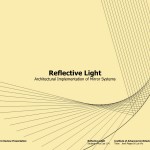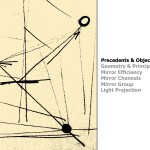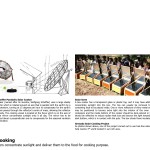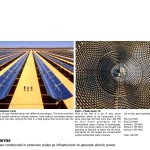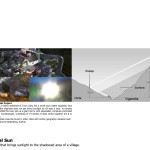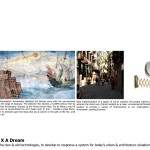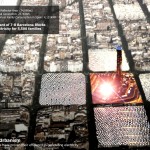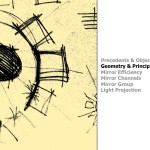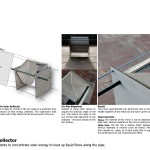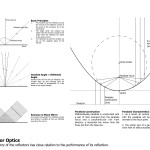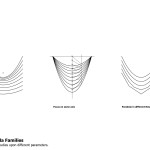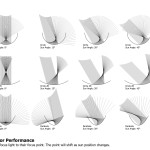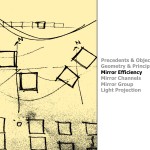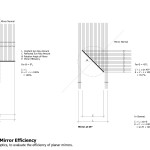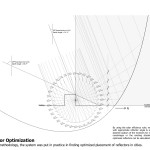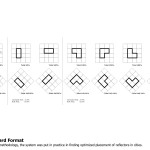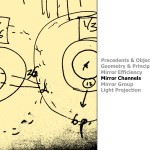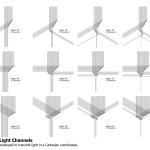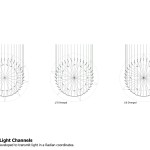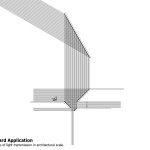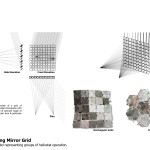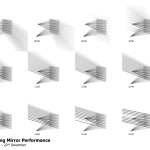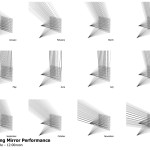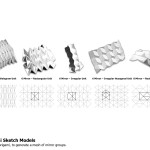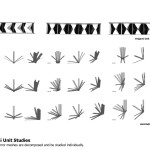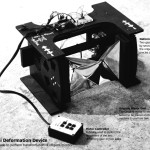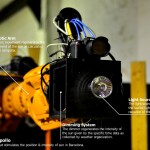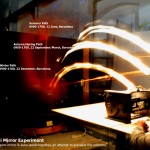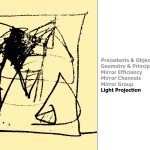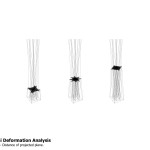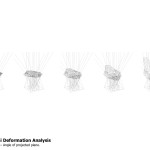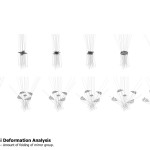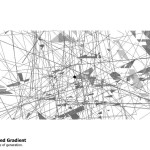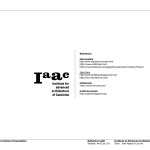The thesis intends to study and experiment the possibilities of implementing mirrors as architectural elements as a way to enhance current architectural and urban situation in more sustainable way for use of solar energy. The mirror systems are elaborated in chapters of efficiency, channelings, group behavior and projection.
Mirror efficiency depicts different location of mirror systems as a parameter to evaluate various placements of mirrors by means of optics, geometry, mathematics and physics as a guidance to optimize and to formulize mirror application.
Mirror channeling is an investigation of the transmission of light in between the reflection between mirrors. Such concept also includes light allocation divide and transport the incident amount of light to different parts of the system.
Mirror groups is a study of the collective behavior of mirror groups after the previous studies of mainly individual mirror prototypes. An experiment was performed to investigate the light reflective behavior upon motorized origami mirror groups. The machinery consists of the Kuka Apollo & the Origami Deformation Machine. The former is a digitally controlled dimmer installed on the kuka robot to imitate the intensity and position of the sun. The latter represents a device that reflects light.
Light Projection is the reaction of light as outcomes of the mirror placements to generate different architectural and urban situations, which are engineered by the mirrors for various specific uses.
For Origami Deformation Experiment, please refer to below link:

